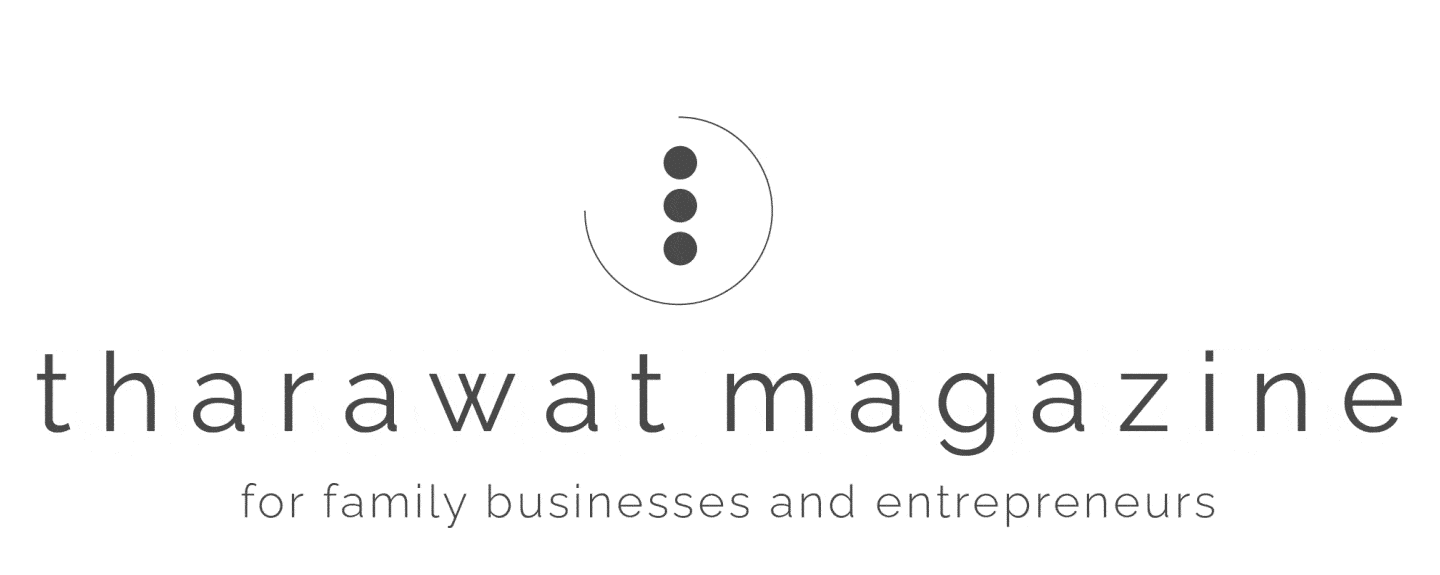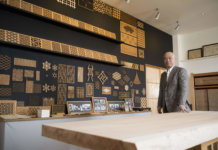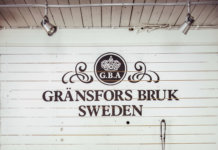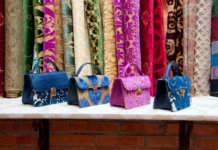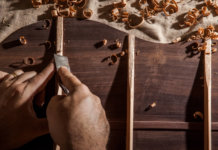Interview with Dr Emanuela Rondi, Assistant Professor at the Faculty of Economics and Management of the Free University of Bozen-Bolzano and research member of the Centre for Family Business Management, Italy, and Dr Irmak Erdogan, Assistant Professor at the School of Business Administration at Altinbas University, Turkey
Intuitively, it seems like tradition and innovation are at odds. We often feel like we must discard the past in order to move on to the future. Yet, family businesses around the world find that by leveraging their history while engaging in innovative behaviour, they can sustain success across generations. In their article published on Entrepreneurship Theory and Practice*, Dr Irmak Erdogan, Dr Emanuela Rondi and Prof Alfredo De Massis, took a closer look at what makes eight Turkish craftsmanship family businesses find a balance between tradition and innovation.
Their research finds that tradition and innovation can occur simultaneously if firms develop the capability of “temporal symbiosis”, which will help them navigate this paradox and remain relevant in the craft industry.
Tharawat Magazine had the opportunity to speak with Dr Irmak Erdogan and Dr Emanuela Rondi about how craft firms can find success in the present by simultaneously embracing the past and the future.


How did you begin your research and what were your main assumptions when you started?
Irmak: We began by assessing long-standing family firms in the Turkish craft industry, focussing on the tension between tradition and innovation.
We assessed eight different legacy firms, some as old as six generations. Interviews with family members and even some non-family members in conjunction with observations and archival data dating back to the 1930s gave us a holistic perspective of their realities.
“Some think that we have to discard the past in favour of the future when innovating. What we found is that these long-standing family firms adapted their product and business over time while preserving the traditional elements at the core of their identity.”
It was important for us to understand how these generational family businesses not only stand the test of time but also remain competitive in the marketplace. Managing the tradition and innovation paradox is a requisite for success, so we concentrated on their approaches to tradition and innovation to see how they balance the concepts.
Emanuela: Our research was in part an effort to deconstruct some preconceived notions regarding innovation and tradition. Some think that we have to discard the past in favour of the future when innovating. What we found is that these long-standing family firms adapted their product and business over time while preserving the traditional elements at the core of their identity.
What is the macroeconomic importance of craftsmanship?
Emanuela: Often, we are compelled to think that at the macroeconomic level, continuous expansion is the sole aim of business. However, we’ve found that this is not necessarily the case. In the craftsmanship industry, for example, large-scale expansion is often considered counterproductive.
Expansion often necessitates industrialisation, which changes the face of the product; the art is often lost when craftsmanship companies attempt to scale. Finding an equilibrium between growth and tradition was a paramount concern for almost all of the eight companies we assessed.

How do you define the tradition innovation paradox?
Emanuela: We first viewed innovation and tradition as opposing forces to develop a clear conceptualisation of the paradox. On the one hand, innovation is something that, when overly emphasised, can lead to seeing the past as a burden that must be discarded. On the other hand, when tradition becomes the only focus, businesses fail to adapt their products and services in the face of changing consumer demands.
All eight of the family firms we assessed implemented different strategies to manage the paradox. They represent concentrations across the spectrum of the craft industry, so different aspects of craftsmanship are at play. Still, they are able to balance tradition and innovation.
How can family businesses manage the paradox?
Emanuela: One of our first observations was that our subject firms approached tradition and innovation very systematically, applying specific strategies. Often, they said this approach was something they learnt from the previous generation, essentially a tradition in itself. Despite this commonality, however, these firms approached their craft in very different ways.
Some of these businesses were successful in preserving tradition over several generations. Curated museums and biographies were just some of the practices they employed. Their approach to tradition showed that they felt the significance of the past by being committed to the values, beliefs and customs imprinted by their iconic founders.
Other firms felt they had lost touch with tradition, elements of this identity were faded or lost, and they were keen to return to it. They went to considerable efforts to revive it. In one of the cases, a firm wished to return to their original family recipe. There were no records of it, so they sought out long-term customers and went back through the generations in their attempts to recover it.
“Our research explains how approaches to tradition and innovation are imprinted across several generations of family members through the means of product signs, family values and beliefs. It shows that innovation doesn’t necessarily compromise tradition, and therefore, the core identity of a business.”
The firms we assessed innovated to meet current market demands either by integrating novel elements into their current product offerings or by segregating innovation, creating distinct new product lines incorporating these elements.
One of the firms, a traditional watchmaker, exemplifies this approach. Their product was mechanical watches, but the industry around them began to shift towards cheaper, more advanced quartz watches. Cognisant of this change, the firm opted to divide their production between 70 per cent quartz and 30 per cent mechanical watches. In doing so, the company stayed relevant without having to discard tradition, which continues to help their reputation.
Our research explains how approaches to tradition and innovation are imprinted across several generations of family members through the means of product signs, family values and beliefs. It shows that innovation, the partial shift to quartz, for example, doesn’t necessarily compromise tradition, and therefore, the core identity of a business. In fact, the watchmakers’ continued production of mechanical watches positioned them in both broad and niche markets, which increased their exposure.

Irmak: Perhaps the most interesting finding from our study is that tradition and innovation are not necessarily contradictory – some firms find a balance. Ideally, technology helps in adapting products to today’s standards without eschewing tradition entirely. Thus, technology can be used as a tool to manage the paradox.
In another case from our research, a baklava company used technology to manage the paradox. The company has been making baklava for six generations. Though their product was successful, the current generation saw that a portion of the market was not being served. Because of its ingredients, diabetic consumers could not eat their baklava. So, to make their product more accessible, the firm decided to innovate.
At the same time, however, it was equally important to the family that they were loyal to what they called the essence of baklava. In reinterpreting baklava, they were not willing to compromise on the taste or shape of the traditional dessert. Initially, their diabetes-friendly recipes failed because the dough was too stiff. Instead of compromising their identity, however, they agreed that the new product was not yet fit for production.
The firm then looked to technology to help develop a product suitable for diabetic consumers. They invested four years into product research, and with the help of engineers, created a special low glycaemic index dough.
At the end of this process, the baklava makers were extraordinarily pleased with the fruits of their research, and their new product is now highly successful. Their case was just one of several in our research that showed it is possible for family businesses in the craftsmanship industry to balance tradition and innovation.
[ms-protect-content id=”4069,4129″]
What are the implications when family firms place too much emphasis on preserving legacy?
Irmak: Firms that focus solely on preserving legacy tend to ignore changing market conditions, which is highly problematic. Through replicating past successes without adding any new value, they become obsolete.
Tradition is organic, so mere replication diminishes its value. Tradition must be nurtured, and firms can do this by renewing their approach to their products. One of our interviewees said, ‘If I don’t belong to today, it means I haven’t protected the cultural heritage.’
This is an illustration of what we call temporal symbiosis, where the past and the future are concurrent. Emphasising the past at the expense of the future or vice versa is unsustainable.
Emanuela: There are many firms out there that are keen to replicate what they did in the past and, as such, are at risk of losing their market share. Even the most loyal customers won’t buy the same product in perpetuity – tastes change – and the same customers do not live forever. Products must be updated in ways that current and prospective customers find appealing.
A related issue arises when the original artisan leaves the production process. Craftsmanship is not the mere replication of products. Master craftspeople adapt their craft, and this is the capability that their heirs need to master.
“The ability to look back and forth in time means that firms can keep their traditions alive while utilising technology to stay relevant, perpetuating tradition by protecting their past and innovating as an engine for the future.”
Is the rapid pace of technological advancement making it harder for family firms to find this balance?
Irmak: The rapid pace of change means consumer expectations are quite different from even a decade ago. However, craft products remain important because they are a representation of the maker’s cultural identity.
Customers are nostalgic for traditional products. Consider the popularity of heritage collections produced by major companies. There is a strong correlation between traditional craftsmanship and products that retain traditional identities.
The mastery involved in these crafts is extremely difficult to replicate, with imitations paling in quality. In this way, high-quality products still imbue craftsmanship firms with a distinct advantage that they can leverage against generic counterparts.
That said, the craft industry in Turkey is currently suffering. Some point to the intricacy of craftsmanship products and the time it takes to produce them; many companies cannot keep up with technology and the expected speed of production. However, the firms in our research embraced technology and harnessed it to enhance their product and their production. If adequately managed, technology is a huge asset for craft firms.
Emanuela: Right now, it’s very hard for firms operating in the craft industry to stay competitive. However, as Irmak just referenced, new opportunities exist for them to grow. Internationalisation, a consummately modern pursuit, which is now easier than ever, allows these firms to access previously untapped markets.
The ability to look back and forth in time means that firms can keep their traditions alive while utilising technology to stay relevant, perpetuating tradition by protecting their past and innovating as an engine for the future. The delicate balance between tradition and innovation typical of many successful craftsmanship companies is nothing new, however. These firms have survived countless changes and are well positioned to face the challenges of the future.
[/ms-protect-content]
*Erdogan I., Rondi E., De Massis A. (2019). Managing the Tradition and Innovation Paradox in Family Firms: A Family Imprinting Perspective. Entrepreneurship Theory & Practice, In press and online.
